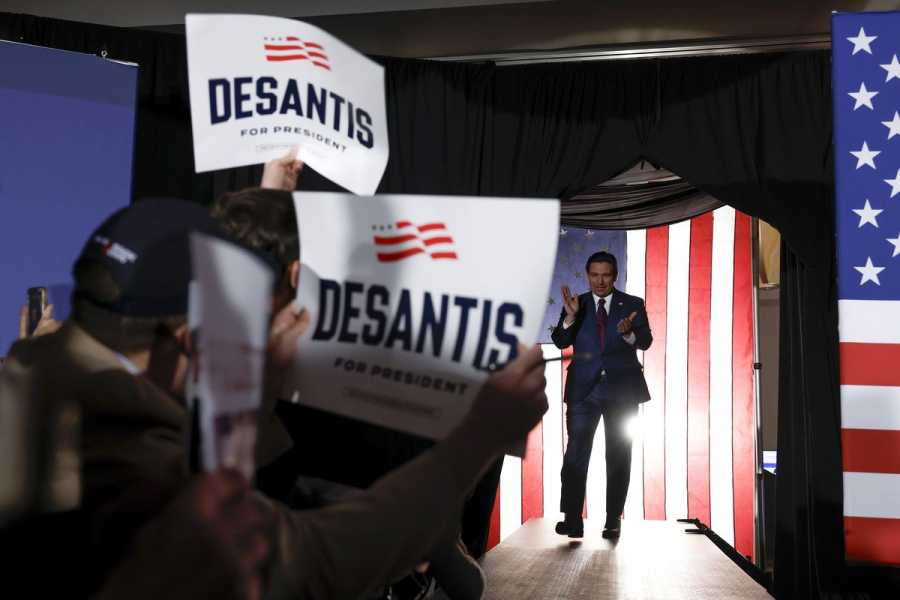The pollsters got Iowa spot on. That means trouble for Trump’s rivals.

Florida Gov. Ron DeSantis greets supporters at his caucus night event on January 15, 2024, in West Des Moines, Iowa. Anna Moneymaker/Getty Images Christian Paz is a senior politics reporter at Vox, where he covers the Democratic Party. He joined Vox in 2022 after reporting on national and international politics for the Atlantic’s politics, global, and ideas teams, including the role of Latino voters in the 2020 election.
Donald Trump’s resounding victory in the 2024 Iowa caucuses should have been expected by just about everyone. You could have seen it coming based on his fundraising numbers, his campaign’s presence in the state, his refusal to debate his primary opponents — or you could have looked at just about any poll.
Since 2016 (and 2020), however, there’s been some apprehension about trusting polls. And even though the state-level polls were generally more accurate in the 2022 midterms than conventional wisdom holds, recent discourse about national polling of a Trump-Biden rematch has reignited those concerns.
Trump led the Republican field for the last year, hovering at about 50 percent in most polls in Iowa as far back as May 2023. And his final vote share, of 51 percent of the vote, is right in line with what most polls expected. And it’s not just Trump. Once all the votes were counted, it looks like the polling of Iowa was pretty accurate in the runup to Monday night’s caucuses. The topline numbers are nearly identical to the final results. And for that to be true in Iowa, with its fickle weather, low turnout, and tedious caucus system, is a victory for pollsters, despite the widespread skepticism over public polling since 2016.
Primary polling across the country historically tends to be pretty inaccurate, G. Elliott Morris, a data journalist and the editorial director of data analytics at ABC News’s FiveThirtyEight, told me. “Not just in Iowa, but they tend to be off on average 7 points. So for any given candidate, their vote share is 7 points different from their polls, going back to 1999 or so. In reality, it might be a bit bigger.”
But looking at the mean average error (MAE), the average disparity between the polls and the final results, for the top three candidates — Trump, Florida Gov. Ron DeSantis, and former South Carolina Gov. Nikki Haley — that gap was just 2.3 points, by Morris’s calculations. “You can round that down to 2 if you want to be optimistic, but right off the bat, the top lines were a lot more accurate this year compared to the average primary, and even more accurate than the average Iowa caucus.”
Historically, Iowa caucus polling tends to be all over the place, reflecting the specific difficulties of polling in Iowa. The state’s voting population is rather small (about 2 million people), turnout rates tend to be even smaller, weather can always throw a wrench into the actual caucus day, and the caucus process can give an edge to candidates benefiting from enthusiastic supporters.
Beyond Trump, the individual polls were pretty close to the final vote totals for DeSantis and Haley. Take the highest-profile polling operation of the caucus: the famed Iowa Poll, conducted by the highly respected pollster Ann Selzer in conjunction with the Des Moines Register, NBC News, and Mediacom. Its last two polls, conducted in December and early January, showed a pretty stable picture after an early fall surge for Nikki Haley and Ron DeSantis. Trump hovered around 50 percent in both polls — and the final read was of 48 percent of the electorate backing Trump, 20 percent backing Haley, and 16 percent backing DeSantis. The December poll showed Trump at 51 percent, Haley at 16 percent, and DeSantis at 19 percent.
The final results? Trump at 51 percent, DeSantis at 21 percent, and Haley at 19 — a mean average error of 3 points.
Morris’s own poll aggregating operation was also close in line, logging Haley’s support at 19 percent, DeSantis’s at 16 percent, and Trump’s at 53 percent, or an MAE of 2.5.
“The modest surprise was DeSantis, who beat his polling average by 5 points,” Morris said. “That speaks to his edge on enthusiasm. He had a higher percentage of voters who really wanted to turn out and vote for him than Nikki Haley.”
Whether this matters for the future of the Republican primary is less clear. Candidates who do better than their polls suggest in Iowa tend to gain ground in national polls, Morris said. But DeSantis has all but abandoned his chances of performing well in New Hampshire’s primary next week, and instead is focusing his campaign’s work on doing better in South Carolina, where FiveThirtyEight’s average shows him trailing Trump and Haley.
And the surprising accuracy of the Iowa polling does not mean that polls for the rest of the cycle will be just as accurate or that their crosstabs are as close to reality. Those national and general election polls are entirely different from polls of one party’s voters in individual states, and they may be more susceptible to the kind of non-response bias and polling troubles showing up in national polls of young voters, for example.
“2016 and 2020 were, of course, pretty bad for the pollsters. 2022 and 2023 were a little bit better,” Morris said. “So when the news is good for them, and for the people like me who like to average polls, we like to share the good news and remind people that this tool that we all rely on for democracy is not as hopelessly broken as most of the commentary implies.”
Sourse: vox.com






